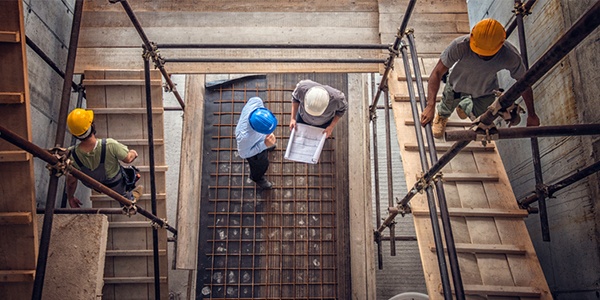
We’ve discussed the who and what of construction specifications. Continuing a review of specification basics, let’s look at when and how the building products specification process occurs.
When Specification in Construction Begins
Today, specification often begins at the outset of a project when architect, contractor and/or client first meet to discuss planning, project definitions, aesthetic and performance criteria. While specific building products may not be explicitly nominated at this stage, requirements are outlined that can influence product specification. In the past, specifications were often written and edited in the technical phase of the design stage, after concepting, design development, and even contractor appointment.
Due to evolving technologies, including Building Information Modeling (BIM), new spec-writing software and spec sites, and augmented and virtual reality tools, specifications now play an important role as soon as design intent emerges, and throughout the building process. And specification doesn’t stop at construction completion and handover, either, but continues through to fulfillment and even while the building begins operation as products reach the end of their lifecycle.
The most common way specifications are initially developed is actually through re-use. In a study conducted by NBS, when beginning a new project 60% of architects, surveyors and engineers said they recycle and modify previous specifications they’ve written for other projects.
How Building Product Specifications Are Produced
Specifiers also look to manufacturers for information to draft the spec: 57% of respondents said they assemble specs by collecting information from manufacturers and collating, and 38% say they ask manufacturers to write their specifications. Others write specs from scratch (49%), use templates (44%), or rely on specifier colleagues for support (25%). Sometimes, architects with clients of larger or more complex portfolios are even excused from the decision if there are requirements defined by the client or recommended by the contractor.
Given that building product manufacturers are the second most important source in specification development, it’s no surprise existing relationships play a significant role. An AIA study on the architect’s journey to specification found that more than seven in 10 architects go with suppliers with whom they have an existing relationship. And that relationship will come into play as soon as a specifier has questions about a requirement or product. According to one spec writer, “the reps we know best are those whose products we know best,” and the rep continues to function as an informational resource.
Hence, most time-strapped architects (60%) will have decided on a product manufacturer without doing any research. And rarely do architects and specifiers spend time broadly searching for new products without clear intent, or feel comfortable taking leaps on products that haven’t been tried and tested. Considered a “professionally conservative” demographic, most architects are not early adopters, and building products manufacturers will have to work a lot harder to gain trust.
So how do building products manufactures begin establishing that trust? First, build great products. Grow reputation by representing your brand as a partner and provide the information they’re seeking. And get to know your audience at a personal level. Architects and specifiers need clean and easy digital access to product and technical information; tools to stay up to date on changes in products, methods and the industry; informational sessions and continuing education classes; and guidance with spec writing. Demonstrate how your building product meets safety requirements, building aesthetic, performance objectives, and other architect and specifier needs.
Ready to start connecting with architects and specifiers? Let us help.